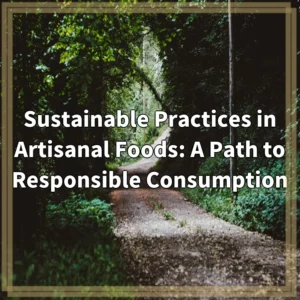What are Sustainable Packaging Designs?
Sustainable packaging designs refer to the use of eco-friendly materials and methods in the production, distribution, and disposal of packaging materials. The goal is to minimize the environmental impact of packaging throughout its lifecycle, from sourcing raw materials to its eventual end-of-life.
Real-World Problems with Sustainable Packaging Designs
While sustainable packaging designs offer numerous benefits, they also come with their own set of challenges and concerns. Some of the real-world problems associated with sustainable packaging include:
1. Cost Considerations
Implementing sustainable packaging designs can sometimes increase manufacturing and production costs. Eco-friendly materials and processes, such as using recycled materials or investing in renewable energy sources, may be more expensive upfront. This cost factor can pose a challenge for businesses, especially small and medium-sized enterprises, who may have limited budgets.
2. Limited Material Options
Finding suitable alternative materials for sustainable packaging can be a challenge. While there is a growing range of eco-friendly materials available, not all of them may be suitable for specific packaging needs. For example, certain products require packaging with specific properties like high durability or moisture resistance. Limited material options can hinder the adoption of sustainable packaging designs in some industries.
3. Consumer Perception and Acceptance
Consumer perception and acceptance of sustainable packaging designs can also be a potential challenge. While awareness about environmental issues is increasing, some consumers may still prioritize convenience and cost over sustainability. This can impact the demand for sustainable packaging solutions, making it difficult for businesses to invest in eco-friendly alternatives without strong market support.
4. Infrastructure and Recycling Facilities
Effective recycling and waste management infrastructure plays a critical role in the success of sustainable packaging designs. However, many regions still lack proper recycling facilities or have limited access to recycling programs. Without adequate infrastructure in place, even well-designed sustainable packaging may end up in landfills, negating its environmental benefits.
5. Balancing Performance and Sustainability
Another challenge is balancing packaging performance with sustainability. Some eco-friendly materials may not match the functionality or protective qualities of traditional packaging materials. It is important to find the right balance between sustainability goals and ensuring the packaging adequately preserves and protects the product during transportation and storage.
Conclusion
While sustainable packaging designs offer promising solutions to minimize the environmental impact of packaging, they also face real-world challenges. Overcoming these problems requires a collective effort from businesses, consumers, and policymakers to invest in research, innovation, and infrastructure development. By addressing these challenges, sustainable packaging designs can continue to evolve and contribute to a greener and more sustainable future.

Solutions for Sustainable Packaging Design Challenges
Addressing the challenges associated with sustainable packaging designs requires innovative solutions and collaborative efforts to promote eco-friendly practices. Here are some potential solutions:
1. Cost-effective Alternatives
Research and development initiatives can focus on creating cost-effective alternatives for sustainable packaging materials and processes. Finding ways to make eco-friendly options more affordable and accessible to businesses will encourage their adoption and reduce cost considerations.
2. Material Innovation
Investing in material innovation can help expand the range of sustainable packaging options available. Developing materials that are both environmentally friendly and meet specific packaging requirements, such as durability and moisture resistance, will support broader adoption across industries.
3. Education and Consumer Awareness
Increasing consumer awareness and education about the benefits of sustainable packaging can drive demand and encourage businesses to prioritize eco-friendly solutions. Effective communication and marketing campaigns can help shift consumer perception and foster greater acceptance of sustainable packaging.
4. Collaboration and Partnerships
Collaboration between businesses, governments, and recycling organizations is crucial to develop and improve recycling infrastructure. By working together, stakeholders can establish comprehensive recycling programs, invest in recycling facilities, and promote the proper management of packaging waste.
5. Design Optimization
Innovative design techniques can help balance packaging performance with sustainability goals. By optimizing packaging designs, businesses can minimize material usage, reduce waste, and improve functionality while still meeting environmental objectives.
Conclusion
Embracing the solutions outlined above can help overcome the challenges associated with sustainable packaging designs. By integrating cost-effective alternatives, material innovation, consumer education, collaboration, and design optimization, we can pave the way towards a more sustainable and environmentally conscious packaging industry.













